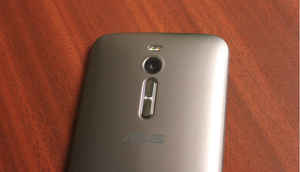
Asus has aggressively marketed the 4GB RAM aspect of the Zenfone 2 since the CES 2015. But, as we've said earlier, there's a lot more to a smartphone than just RAM, or camera or any other aspect. A good phone is one that balances all aspects at a good price. Hence, now that we've had the opportunity to use the Zenfone 2 for a while, putting it through the motions, here's a quick comparison between the Taiwanese company's upcoming flagship and its competitors. We're also including camera test shots and our initial impressions of the 13MP camera on the back of the Zenfone 2.

Before we begin, let's establish the most obvious competitors of the Zenfone 2. The phone enters a highly vibrant segment of the market, competing directly against the OnePlus One and Xiaomi Mi4. Both these smartphones have been the talk of the town for a while now and pose a definite threat.
The Honor 6 Plus is also a legitimate competitor, but we kept it out of this comparison because of the higher price tag. We'll talk more about it in the full review for the Zenfone 2.
So, without further ado, we'll start with the performance (next slide).
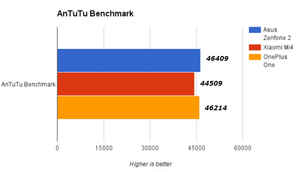
AnTuTu Benchmark
Asus' romance with Intel for its Zenfones has paid off earlier and it seems to be doing so now. The Intel Atom Z3580 ranks right up there with the Snapdragon 801 inside the OnePlus One and Xiaomi Mi4 and the difference between the devices is very small. There's really not much to choose from here. If you have any idea of the OnePlus One or Mi4's performance, then you will like the Zenfone 2 as well.
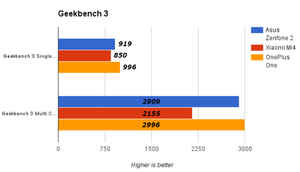
Geekbench 3
The Geekbench 3 benchmark measures the performance of the entire system, including both software and hardware. While the OnePlus One edges out the other devices here, the difference isn't much. This means that pricing will make a big difference in this case.

3D Mark Ice Storm Unlimited
The 3D Mark Ice Storm benchmark shows that the Zenfone 2 can go toe to toe with the OnePlus and Xiaomi devices. What's surprising is that while the other two devices max out both the Ice Storm and Ice Storm Extreme tests, the Intel-powered Zenfone 2 can't max out the Ice Storm Extreme test. It comes very close though, with a 10,000 plus score in that test.
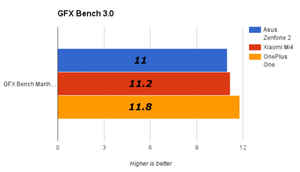
GFX Bench 3.0
More on the GPU aspect. What you may have missed is that the Zenfone 2 uses the same PowerVR GPU (PowerVR G6430) used in the Apple A7 SoC. This is actually why the gaming and graphics performance of this phone is so good.
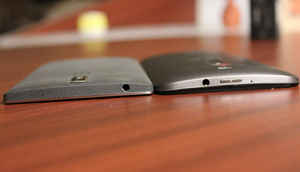
Conclusion (Performance)
While the OnePlus One comes out as the top performer among the three devices, the Zenfone 2 is no slob either. The Intel Atom Z3580 drops Intel's hyperthreading technology, but is a worthy successor to the Z2580 that we saw in the Zenfone 5. It's a top performer and a high-end SoC. You won't feel any difference in regular usage.
Next up: Battery
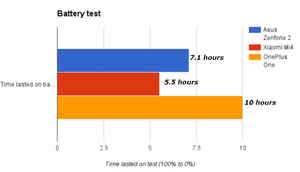
Battery
What's performance without battery life, right? Asus has improved the battery with the Zenfone 2, but not quite enough. The 3000 mAh battery lasts longer than the Xiaomi Mi4, but takes a beating from the OnePlus One. It should get you by, but will definitely not last you through the day.
Next up: Camera

Note: Before we begin, please note that these are cropped representations of the original camera samples. We will put up the full shots in the full review. You should be able to get a good idea from these though.
Bright sunlight
Under bright sunlight, the Zenfone 2 seems to be oversaturating the pictures. This is taken in auto mode, without using any camera tweaks or apps, which means the problem lies in Asus' algorithm. If you're a fan of such images, you will like it. As for us, we don't.
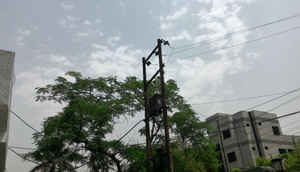
Outdoors normal light
Outdoor images are just about fine with the Zenfone 2. Try taking the same images with its competitors though and you'll see what this phone lacks.

Colours
Taken under fluorescent lights, the white and yellow colours in this picture are visibly blown out.

Low light
Though this image is slightly undersaturated, the low light imaging of the Zenfone 2 seems to be respectable. Of course, this is clicked without using Asus' much talked about low light mode, so things could be better still.
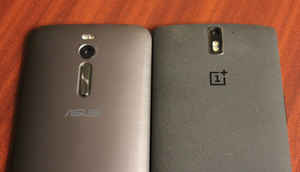
Conclusion (Camera)
The Zenfone 5 had a respectable camera for its price range, but we can't say the same about the Zenfone 2. The camera lacks details and struggles with focusing under uneven light conditions. It doesn't stand a chance against the Mi4 and OnePlus One and is miles behind the Honor 6 Plus.
Next: UI
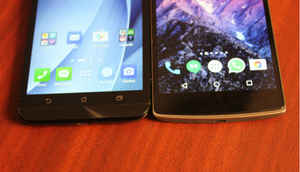
UI
The UI is another aspect of the Zenfone 2 that we don't like. Asus' Zen UI and Lenovo's Vibe UI are possibly the most bloated of the OEM provided custom UIs out there. It comes with 28 pre-loaded apps and you will almost certainly be disabling stuff like Dr. Safety and Omlet Chat.
Next: Display
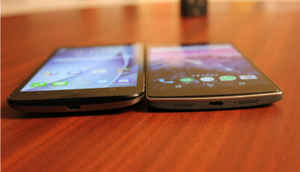
Display
One really good thing about the Zenfone 2 is the crisp display. The 1080p display may not boast the highest pixel density in the market, but it's definitely among the best out there. The display has very good viewing angles and the touch experience is top class.
Next: Build
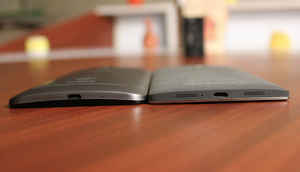
Build
Comparisons with the LG G3 and HTC One M8 are inevitable, but there's no denying the fact that the Zenfone 2 is a well built device. Our only complaint is that the design is not seamless, as in, the brushed metallic finish on the back doesn't really go with the black plastic on the front. It's still a good looking phone though and feels premium enough for the price.
It is worth noting that the Zenfone 2 is a thick and bulky device. It's as big as the OnePlus One, but not as light or thin, which makes it tougher to manage.
Next: Wrapping up
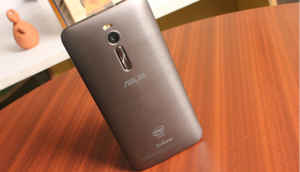
Wrapping up
As always, our final verdict will be delivered after the review. What we can say for certain though is that pricing will be the key here. The Zenfone 2 is no slouch and it is a more than worthy successor to the Zenfone 5, Zenfone 6 and party. Below 20k, this phone will be a really good buy, but Asus has to stay competitive to be successful.